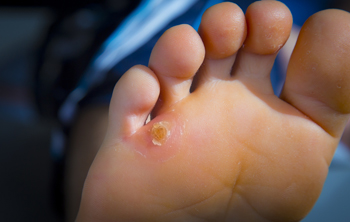Connect With Us
Blog
Items filtered by date: September 2025
Types of Ankle Sprains and Their Care
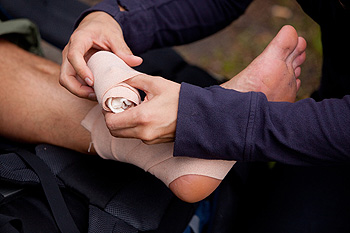
Ankle sprains are common injuries that occur when the ligaments are stretched or torn. They are classified into grades that indicate severity. A Grade 1 sprain is mild with slight stretching of ligaments, Grade 2 is moderate with partial tearing, and Grade 3 is severe with complete ligament rupture. Causes include sudden twisting, falls, or sports injuries. Risk factors include weak muscles, wearing improper footwear, or uneven surfaces. Symptoms range from pain and swelling to instability and limited mobility. A podiatrist can provide an accurate diagnosis and treatment to restore strength and prevent re-injury. If you have ankle pain, it is suggested that you consult a podiatrist who can accurately diagnose and treat what may be going on.
Although ankle sprains are common, they aren’t always minor injuries. If you need your ankle injury looked at, contact Dr. Howard Horowitz from Bowie Foot & Ankle . Our doctor can provide the care you need to keep you pain-free and on your feet.
How Does an Ankle Sprain Occur?
Ankle sprains are the result of a tear in the ligaments within the ankle. These injuries may happen when you make a rapid shifting movement while your foot is planted. A less common way to sprain your ankle is when your ankle rolls inward while your foot turns outward.
What Are the Symptoms?
- Pain at the sight of the tear
- Bruising/Swelling
- Ankle area is tender to touch
- In severe cases, may hear/feel something tear
- Skin discoloration
Preventing a Sprain
- Wearing appropriate shoes for the occasion
- Stretching before exercises and sports
- Knowing your limits
Treatment of a Sprain
In many cases, the RICE method (Rest, Ice, Compression, and Elevate) is used to treat ankle sprains. However, you should see a podiatrist to see which treatment option would work best with your injury. In severe cases, surgery may be required.
It is important to ask your doctor about rehab options after you receive treatment for your injury. Stretching, strength training, and balance exercises may help the ankle heal while also preventing further injury.
If you have any questions, please feel free to contact our office located in Bowie, MD . We offer the newest diagnostic and treatment technologies for all your foot care needs.
It's Time for Beautiful Feet
Types of Corns on the Feet
A corn on the foot can develop from excess pressure. This is often the result of wearing shoes that do not fit correctly. The types of corns that can form are referred to as hard and soft corns. The latter gradually develops between the toes and can cause severe pain and discomfort. The top of the corn is often moist, and toes that are crammed together for the majority of the day may cause this to occur. Hard corns can develop on top of the toes, or on the bottom of the feet. Patients who run barefoot may be susceptible to developing a hard corn. Additionally, they can form on top of the toes from wearing shoes that can cause excess friction as walking and running are pursued. If you have a corn on your foot, please consult with a podiatrist who can effectively treat any type of corn.
If you have any concerns regarding your feet and ankles, contact Dr. Howard Horowitz of Bowie Foot & Ankle . Our doctor will treat your foot and ankle needs.
Corns: What Are They? and How Do You Get Rid of Them?
Corns can be described as areas of the skin that have thickened to the point of becoming painful or irritating. They are often layers and layers of the skin that have become dry and rough, and are normally smaller than calluses.
Ways to Prevent Corns
There are many ways to get rid of painful corns such as wearing:
- Well-fitting socks
- Comfortable shoes that are not tight around your foot
- Shoes that offer support
Treating Corns
Treatment of corns involves removing the dead skin that has built up in the specific area of the foot. Consult with Our doctor to determine the best treatment option for your case of corns.
If you have any questions, please feel free to contact our office located in Bowie, MD . We offer the newest diagnostic and treatment technologies for all your foot care needs.
Tarsal Tunnel Syndrome and Relief From a Podiatrist
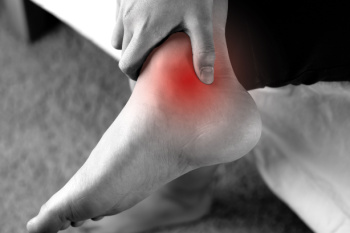
Tarsal tunnel syndrome is caused by compression of the posterior tibial nerve as it travels through the tarsal tunnel in the ankle. This pressure can result in pain, tingling, burning, or numbness in the foot and ankle. Causes include injury, flat feet, swelling, or conditions like arthritis. Risk factors may involve repetitive stress, obesity, or chronic inflammation. Symptoms can worsen with activity and may radiate into the toes. A podiatrist can diagnose the condition through examination and imaging, then create a personalized treatment plan that may include orthotics, or minimally invasive procedures. If you have persistent foot or ankle discomfort, it is suggested that you schedule a visit with a podiatrist who can provide an accurate diagnosis and treatment.
Tarsal tunnel syndrome can be very uncomfortable to live with. If you are experiencing tarsal tunnel syndrome, contact Dr. Howard Horowitz of Bowie Foot & Ankle . Our doctor can provide the care you need to keep you pain-free and on your feet.
Tarsal Tunnel Syndrome
Tarsal tunnel syndrome, which can also be called tibial nerve dysfunction, is an uncommon condition of misfiring peripheral nerves in the foot. The tibial nerve is the peripheral nerve in the leg responsible for sensation and movement of the foot and calf muscles. In tarsal tunnel syndrome, the tibial nerve is damaged, causing problems with movement and feeling in the foot of the affected leg.
Common Cause of Tarsal Tunnel Syndrome
- Involves pressure or an injury, direct pressure on the tibial nerve for an extended period of time, sometimes caused by other body structures close by or near the knee.
- Diseases that damage nerves, including diabetes, may cause tarsal tunnel syndrome.
- At times, tarsal tunnel syndrome can appear without an obvious cause in some cases.
The Effects of Tarsal Tunnel Syndrome
- Different sensations, an afflicted person may experience pain, tingling, burning or other unusual sensations in the foot of the affected leg.
- The foot muscles, toes and ankle become weaker, and curling your toes or flexing your foot can become difficult.
- If condition worsens, infections and ulcers may develop on the foot that is experiencing the syndrome.
A physical exam of the leg can help identify the presence of tarsal tunnel syndrome. Medical tests, such as a nerve biopsy, are also used to diagnose the condition. Patients may receive physical therapy and prescriptive medication. In extreme cases, some may require surgery.
If you have any questions please contact our office located in Bowie, MD . We offer the newest diagnostic and treatment technologies for all your foot and ankle needs.
Understanding the Importance of Pronation
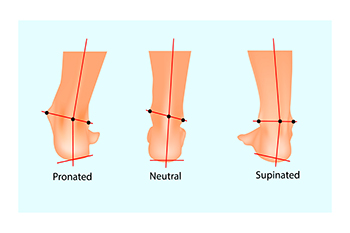
Pronation is the natural motion your foot makes as it rolls inward when walking or running, helping to absorb shock and distribute weight evenly. In neutral pronation, the heel strikes the ground first, the arch lowers slightly to cushion impact, and weight is smoothly transferred forward to push off the toes. This balanced motion keeps the feet and ankles aligned, supporting efficient movement. When overpronation occurs, the foot rolls too far inward, often placing excess strain on the arch, heel, and big toe. This can lead to plantar fasciitis or arch pain. Underpronation, also called supination, means the foot rolls outward with each step. This can increase stress on the smaller toes and outer edge of the foot. Both abnormal patterns may contribute to ankle instability, repetitive injuries, or uneven wear on the feet. A podiatrist can evaluate your gait, identify pronation issues, and recommend proper treatment. If you are experiencing foot pain that may be linked to your gait, it is suggested that you make an appointment with a podiatrist for a diagnosis and treatment.
If you have any concerns about your feet, contact Dr. Howard Horowitz from Bowie Foot & Ankle . Our doctor can provide the care you need to keep you pain-free and on your feet.
Biomechanics in Podiatry
Podiatric biomechanics is a particular sector of specialty podiatry with licensed practitioners who are trained to diagnose and treat conditions affecting the foot, ankle and lower leg. Biomechanics deals with the forces that act against the body, causing an interference with the biological structures. It focuses on the movement of the ankle, the foot and the forces that interact with them.
A History of Biomechanics
- Biomechanics dates back to the BC era in Egypt where evidence of professional foot care has been recorded.
- In 1974, biomechanics gained a higher profile from the studies of Merton Root, who claimed that by changing or controlling the forces between the ankle and the foot, corrections or conditions could be implemented to gain strength and coordination in the area.
Modern technological improvements are based on past theories and therapeutic processes that provide a better understanding of podiatric concepts for biomechanics. Computers can provide accurate information about the forces and patterns of the feet and lower legs.
Understanding biomechanics of the feet can help improve and eliminate pain, stopping further stress to the foot.
If you have any questions please feel free to contact our office located in Bowie, MD . We offer the newest diagnostic and treatment technologies for all your foot and ankle needs.
Os Trigonum Syndrome and How It Affects the Ankle
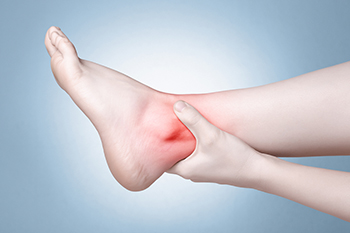
Os trigonum syndrome is a painful condition that occurs when an extra bone at the back of the ankle, called the os trigonum, becomes irritated. This small piece of bone is present in some people and usually does not cause problems. However, repetitive ankle movement, such as pointing the toes during ballet, soccer, or running, can trap this bone between the heel and ankle, leading to pain and swelling. Symptoms often include deep aching at the back of the ankle, tenderness when pressing on the area, and discomfort that worsens with activity. It may be mistaken for other ankle injuries, which is why an accurate diagnosis from a podiatrist is important. Treatment includes rest, anti-inflammatory medication, targeted exercise, or supportive footwear. In more severe cases, surgery to remove the os trigonum can relieve pain and restore ankle function. If you have pain or swelling at the back of your ankle, it is suggested that you schedule an appointment with a podiatrist for a diagnosis and proper treatment.
Ankle pain can be caused by a number of problems and may be potentially serious. If you have ankle pain, consult with Dr. Howard Horowitz from Bowie Foot & Ankle . Our doctor will assess your condition and provide you with quality foot and ankle treatment.
Ankle pain is any condition that causes pain in the ankle. Due to the fact that the ankle consists of tendons, muscles, bones, and ligaments, ankle pain can come from a number of different conditions.
Causes
The most common causes of ankle pain include:
- Types of arthritis (rheumatoid, osteoarthritis, and gout)
- Ankle sprains
- Broken ankles
- Achilles tendonitis
- Achilles tendon rupture
- Stress fractures
- Bursitis
- Tarsal tunnel syndrome
- Plantar fasciitis
Symptoms
Symptoms of ankle injury vary based upon the condition. Pain may include general pain and discomfort, swelling, aching, redness, bruising, burning or stabbing sensations, and/or loss of sensation.
Diagnosis
Due to the wide variety of potential causes of ankle pain, podiatrists will utilize a number of different methods to properly diagnose ankle pain. This can include asking for personal and family medical histories and of any recent injuries. Further diagnosis may include sensation tests, a physical examination, and potentially x-rays or other imaging tests.
Treatment
Just as the range of causes varies widely, so do treatments. Some more common treatments are rest, ice packs, keeping pressure off the foot, orthotics and braces, medication for inflammation and pain, and surgery.
If you have any questions please feel free to contact our office located in Bowie, MD . We offer the newest diagnostic tools and technology to treat your foot and ankle needs.

